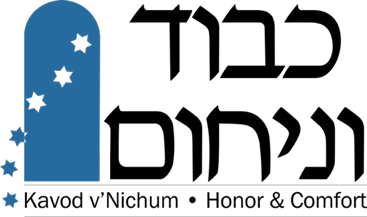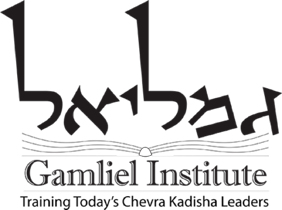Improving Taharah Leadership
Tasks of the Taharah Leader Outside of the Taharah Room
Chevrah Kadisha leadership often falls on the shoulders of the roshim, those who lead the taharah ritual itself. These leaders not only understand the holiness of this work and its spiritual aspects, but also the practical aspects of actually preparing a body as well. This puts them in a unique position to be true leaders for the chevrah. (A chevrah may have more than one rosh and roshah, as different individuals may lead the ritual on different occasions.)
Other communities have a chevrah leader who is not an active rosh or roshah.
Outside of the taharah room, the chevrah leader represents and promotes the chevrah, and the sometimes complex task of ensuring a Jewish burial for all Jews. It can seem that their job as leaders never ends. They may be the ones who are the teachers at educational events, the ones who give drashot on Shabbat about midwifing souls between realms, and often they are the ones who meet with families and guide them through the difficult time when they face death in the family.
As such, these leaders should be supported by the chevrah to continually improve their knowledge, expertise, and wisdom in relation to Jewish death practices, rituals, and liturgy. They should be supported to attend conferences, courses, regional events, and even local talks and gatherings. The world of the chevrah, its policies and challenges in today’s world, and the changing technologies of life all require that these leaders continually be proactive in learning and growing.
To improve taharah leadership, and hence chevrah leadership, the most effective approach is to support, mentor, engage, and inspire your leaders and roshim to improve themselves in every way. Then implement local trainings where they can share what they have learned.
The intent is not to entrench these leaders forever, but rather, to inspire and equip them to uplift the entire chevrah membership with new knowledge, inspiration, and learning. This leads to new roshim being trained so that the process is self-perpetuating, supporting the chevrah for many generations into the future.
Leading During Taharah
The rosh or roshah is in charge inside the taharah room, including the team and the physical space. This is a good thing. They have responsibilities that ensure the physical safety of the team, establish a sacred space in which to perform this holy work, and guide the activities of everyone in the room so that kavanah is preserved, kavod hameit is accomplished, time and resources are used wisely, and the emotional health of the team is supported.
Leadership can take many forms in this confined space that includes a dead body. To improve leadership, begin by examining how one leads. One of the most important things for leaders to remember is one that is also easy to forget: leaders must put assumptions and their ego on the doorstep prior to entering the taharah facility. Once a leader is in the building to guide a taharah, their personal requirements are secondary to those of the tasks before the team.
This translates into how leaders make decisions. These decisions must be based on an appropriate balance of the following priorities:
- Safety of the Chevrah Kadisha team
- Showing honor and respect for the dead (kavod hameit)
- Showing honor and respect to the deceased’s family
- Jewish traditions and minhagim
- Funeral home desires and practices
Just because you have done something the same way for a long time, that does not mean it is appropriate today. By leaving assumptions and ego at the door, the leader becomes free to make decisions based on what’s happening in the taharah room at the moment, and to employ creative ideas, possibly different manuals, new approaches as appropriate. Remember that the chevrah’s motto is “we do the best we can” under the circumstances, to honor this deceased.
The leader’s job is not just to direct activities according to the specified order of events. It is to lead the team, to uplift the activities and attitudes of the team members, and to instill the kavanah of kavod hameit into the possibly “shmutzy” preparation room of a funeral home, transforming it into a sacred space.
Ensuring Health of the Team
Physical Safety of the Team
The leader is responsible for ensuring the space in which the taharah ritual is performed is safe. Education and safety precautions should be taken for all teams that perform taharot. Kavod v’Nichum has published a manual called, Health and Safety Precautions for Taharah, which details precautions and recommends safety measures, both for individual team members and in terms of the space itself..
Emotional Safety of the Team
The leader is responsible to facilitate two short briefings with the taharah team, one before and one after the taharah ritual itself. Some chevrot mistakenly don’t bother with these briefings, assuming that, “everyone is OK or they will speak up.”
The pre-briefing, prior to taharah, is essential to setting expectations and keeping the team informed. This can be a very short gathering to simply pass on the state of the body, the name of the deceased in both English and Hebrew, and other relevant information. It can also be a time to review the procedure for those who have not participated for a while, or for new members for whom this might be their first taharah experience. The conclusion of this pre-briefing naturally leads to the setting of intentions and the initiation of the ritual itself.
The post-taharah debriefing is where the leader can assess the physical and emotional health of the team members. Again, this might be a short moment where the leader simply checks in with each participant, and if everyone is fine, then the team can go home. If there was something unsafe in the physical environment, this is an opportunity to discuss how that should be handled. If there was some detail of the ritual that was made unusual by the situation, this is the place to discuss it and consider how it might affect future taharot.
This should also be an opportunity for members to share feelings about their personal experience in the taharah room, about some action of the leader or another member during the ritual, or about emotional trauma that might be difficult to express. Emotions are powerful and can affect us deeply. It is important that we provide the time for these to be expressed at their own pace.
It might be that a team member needs to meet with the leader again in a few days to discuss what happened. It might be that the entire team needs to meet because of the difficult nature of this experience. Whatever the outcome, the leader is responsible to see that members have the opportunity to get the help they need, even if that help is just the presence of a good listener.

